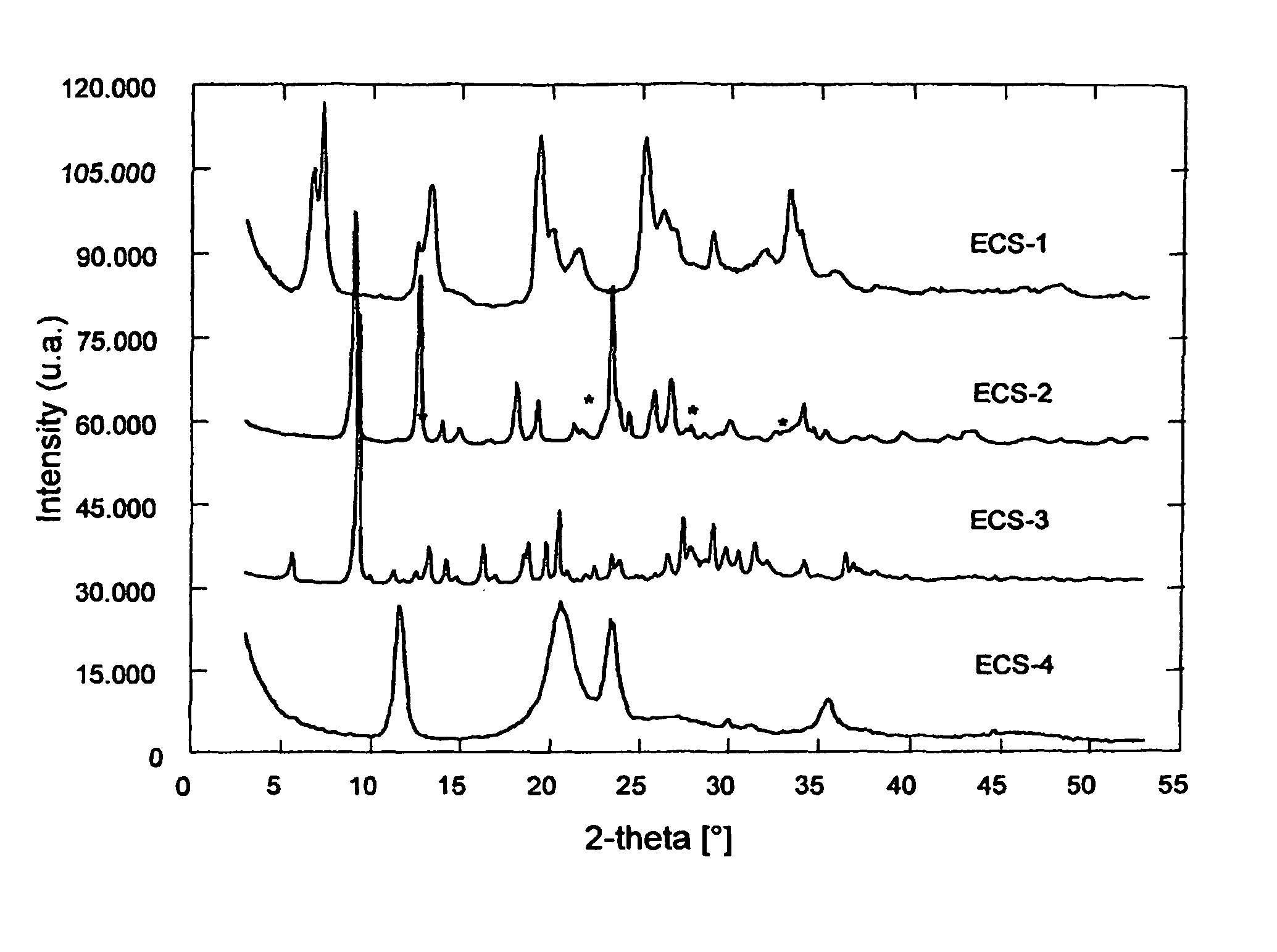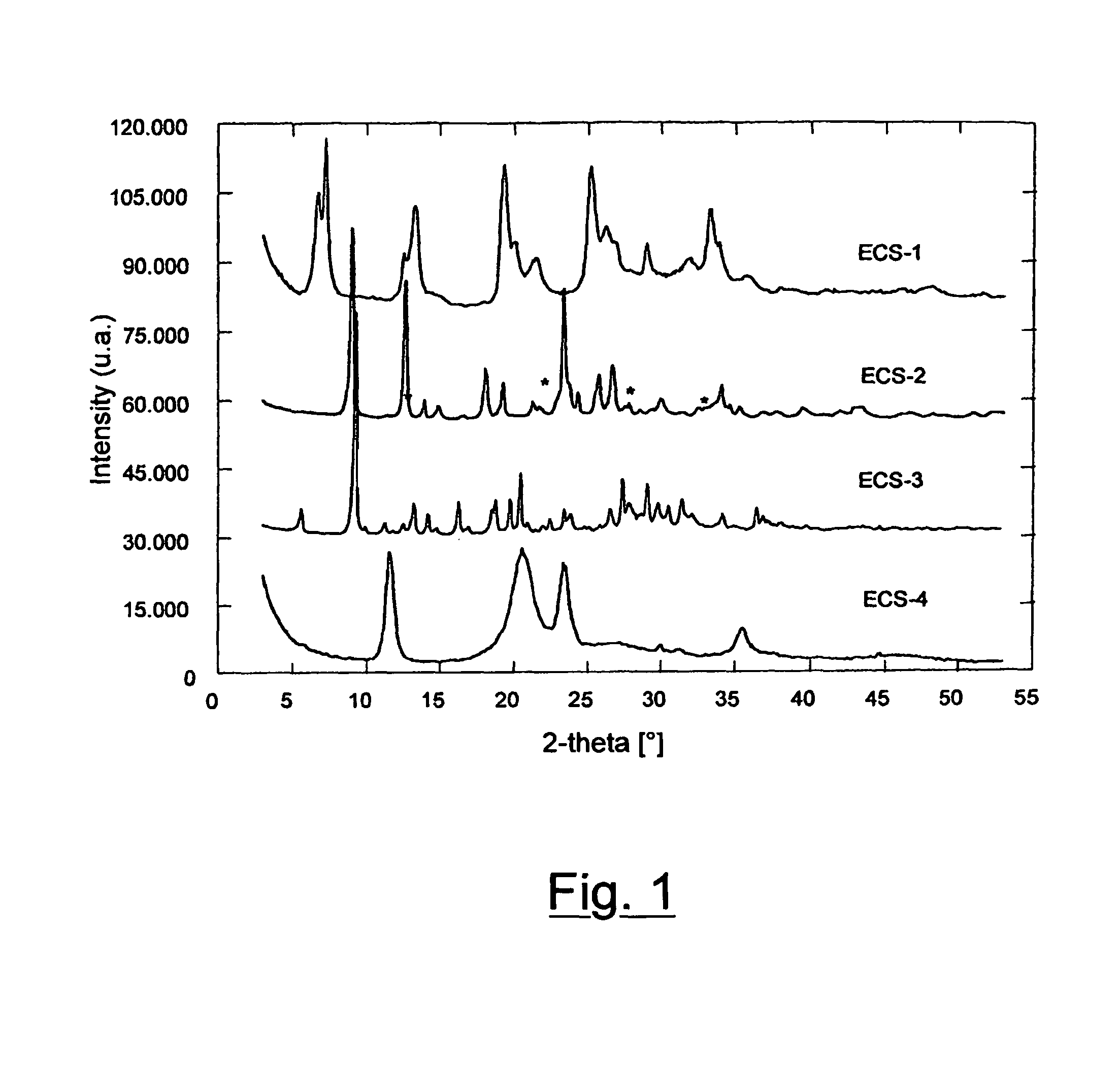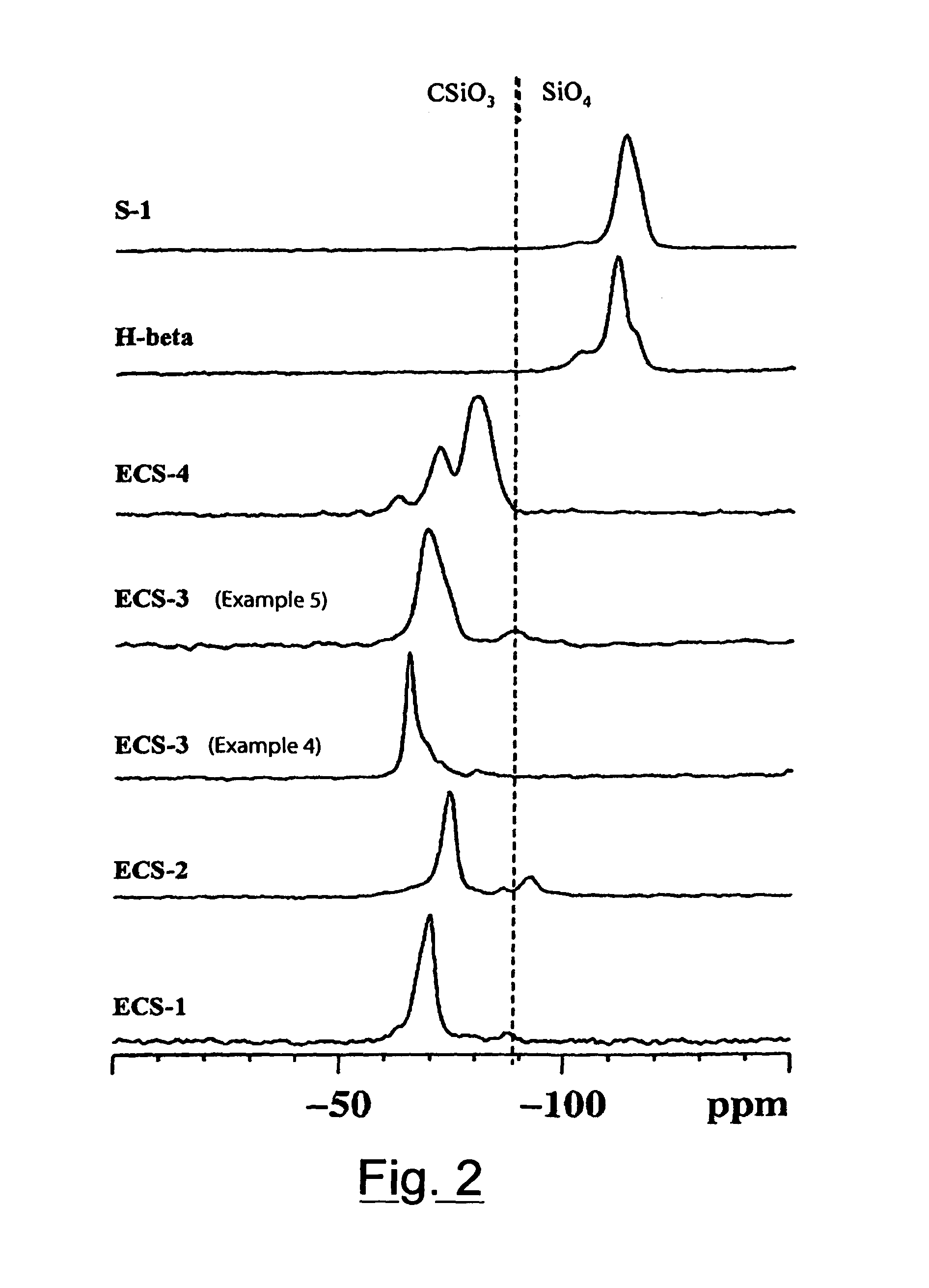Organic-inorganic hybrid silicates and metal-silicates having an ordered structure
a technology of applied in the field of organic-inorganic hybrid silicates and metalsilicates having an ordered structure, can solve the problems of inability to obtain materials with very different properties in relation to inorganic correspondents, and achieve the effect of improving the stability and stability of the material
- Summary
- Abstract
- Description
- Claims
- Application Information
AI Technical Summary
Benefits of technology
Problems solved by technology
Method used
Image
Examples
example 1
Synthesis of a Sample of ECS-4
[0162]0.5 g of KOH and 0.14 g of aluminium isopropoxide are dissolved in 11.8 g of demineralised water. 12.0 g of Bis(triethoxy-silyl)benzene, whose chemical formula is provided below, are added to the limpid solution:
(CH3CH2O)3Si—C6H4—Si(OCH2CH3)3
[0163]The molar ratios between the reagents are as follows:[0164]Si / (Si+Al)=0.99 wherein T=Al[0165]K+ / Si=0.15[0166]OH− / Si=0.15[0167]H2O / Si=11
wherein Si is the silicon deriving from Bis(triethoxysilyl)benzene. The blend is left under stirring for about 1 hour at 30-40° C., it is then charged into a stainless steel autoclave subjected to an oscillating movement in an oven heated to 100° C. The blend is left under these hydrothermal reaction conditions for a period of four days.
[0168]At the end of the treatment, the autoclave is cooled, the suspension contained therein is filtered and the solid is washed with demineralised water and dried at 60° C. for about two hours. Chemical analysis of the washed and dried s...
example 2
Synthesis of a Sample of ECS-1
[0176]0.36 g of NaOH are dissolved in 11.8 g of demineralised water. The limpid solution thus obtained is heated to about 60° C. and 4.88 g of NaAlO2 (54% weight of Al2O3) are added under vigorous stirring until a limpid, or slightly gelatinous solution, is obtained. The solution is then brought back to room temperature, and 12.0 g of Bis(triethoxysilyl)benzene are added to the reaction environment. The mixture thus obtained has the following composition, expressed as molar ratios:[0177]Si / (Si+Al)=0.54 wherein T=Al[0178]Na+ / Si=1.02[0179]OH− / Si=0.15[0180]H2O / Si=11
wherein Si is silicon deriving from Bis(triethoxysilyl)benzene.
[0181]The sample is charged into a stainless steel autoclave subjected to an oscillating movement in an oven heated to 100° C. for a period of 7 days.
[0182]At the end of the treatment, the autoclave is cooled, the suspension contained therein is filtered and the solid is washed with demineralised water and dried at 60° C. for about t...
example 3
Synthesis of a Sample of ECS-2
[0186]0.59 g of NaOH are dissolved in 11.8 g of demineralised water. 2.44 g of NaAlO2 (54% weight of Al2O3) are added to the limpid solution thus obtained, under vigorous stirring until a limpid, or slightly gelatinous solution is obtained. Finally 12.0 g of Bis(triethoxysilyl)benzene are added to the reaction. The mixture thus obtained has the following composition, expressed as molar ratios:[0187]Si / (Si+Al)=0.70 wherein T=Al[0188]Na+ / Si=0.68[0189]OH− / Si=0.25[0190]H2O / Si=11
wherein Si is silicon deriving from Bis(triethoxysilyl)benzene.
[0191]The sample is charged into a stainless steel autoclave subjected to an oscillating movement in an oven heated to 100° C. for a period of 28 days.
[0192]At the end of the treatment, the autoclave is cooled, the suspension contained therein is filtered and the solid is washed with demineralised water and dried at 60° C. for about two hours. Chemical analysis of the washed and dried sample, shows the following molar com...
PUM
 Login to View More
Login to View More Abstract
Description
Claims
Application Information
 Login to View More
Login to View More - R&D
- Intellectual Property
- Life Sciences
- Materials
- Tech Scout
- Unparalleled Data Quality
- Higher Quality Content
- 60% Fewer Hallucinations
Browse by: Latest US Patents, China's latest patents, Technical Efficacy Thesaurus, Application Domain, Technology Topic, Popular Technical Reports.
© 2025 PatSnap. All rights reserved.Legal|Privacy policy|Modern Slavery Act Transparency Statement|Sitemap|About US| Contact US: help@patsnap.com



